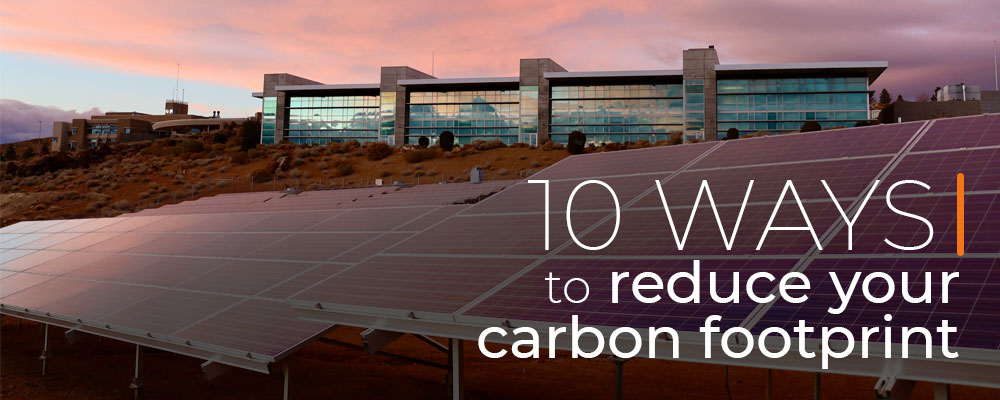Carbon footprint is the total volume of greenhouse gases (GG) that results from daily economic and human activities. In recent years, emphasis has been given to the importance of carbon footprint reduction because of the negative impact that it brings. Australia rank among the countries with the highest per capita CO2 emissions. Including exports, its carbon footprint per capita is 9x higher than China’s, 4x that of the US, and 37x that of India.
[1] https://www.theguardian.com/environment/2013/nov/19/australia-worst-carbon-emitter-per-capita-among-major-western-nations#:~:text=Overall%2C%20Australia%20is%20the%2016th,terms%20of%20per%20capita%20emissions.
Given the data it’s essential to take conscious measures and initiatives to reduce your carbon footprint as much as possible, especially in the day-to-day activities you engage in.
10 ways to reduce your carbon footprint
The basics
1. Conduct an energy audit
While there is an upfront cost for an energy audit, its effects will be worth it, especially once you see lower energy consumption reflected on your energy bills. With an energy audit, you will get an overview of how energy is used or wasted in your home. It will also be easier for you to come up with effective measures to save on energy.
2. Choose green energy providers
You have the option to choose electricity providers in Australia that support clean energy, so you can contribute to reducing your carbon footprint. If you’re looking for an energy provider in Brisbane, NSW, SA, Tasmania, Victoria, and WA, it is easy to find certified green energy providers such as Origin Energy, AGL Energy, Momentum Energy, and Powershop.
3. Follow the 5Rs
There are now 5Rs to follow so you can reduce your carbon footprint: Refuse, Reduce, Re-use, Re-purpose, and Recycle. As much as possible, apply these 5Rs of waste management in the things you do.
• Refuse materials that can harm the environment, especially single-use plastics like straws, cups, and polystyrene containers
• Reduce If there is an option to fix an appliance, send it to the repair shop instead of disposing of it. You can also give away the things that you no longer need to other people who may still find a good use for them.
• Re-use the things you frequently need. Bring your bag when shopping and re-use it for as long as possible.
• Re-purpose. Some things may be used in ways other than what they’re originally designed for. Instead of throwing them away, why not use plastic containers as plant pots or pencil holders.
• Recycle. If the option of re-purposing items is no longer possible, consider recycling. It’s like giving life to old things so that they won’t end up in the trash.
When using appliances…
4. Replace incandescent bulbs
Are you still using fluro light bulbs? Replace them. Incandescent bulbs can waste up to 90% of their energy as heat, so consider switching to LEDs. Initially they can cost more; however, they only use around a quarter of the energy and last longer too, so they effectively pay for themselves.
5. Switch off and unplug
Even the simple habit of switching the lights off or unplugging devices can help reduce your carbon footprint. Some appliances use nearly as much power when they are turned off because they are still consuming standby power, so this is one energy waste that you can easily eliminate.
DID YOU KNOW: Energy vampires is the term used to refer to appliances and electronics that draw energy even when not in use.
6. Assess your appliances
Some appliances like tumble dryers are the biggest carbon culprits. Improperly working appliances, like a refrigerator with a malfunctioning seal, can also increase energy bills. Check how your appliances are working and replace or fix them as necessary. It may mean added expenses, but the improved running costs can bring enormous benefits.
When using water…
7. Set your water heater down
Did you know that you can reduce your carbon footprint by simply turning your water heater down to 40 degrees? It may seem a small step to take, but it has a huge impact on saving up to 500 pounds of CO2 per year.
8. Use a low-flow showerhead
Another way to reduce your carbon footprint when using water is to install a low-flow showerhead. Reduction in the use of hot water can help you save up to 350 pounds of CO2 yearly.
When using home heating…
9. Upgrade old storage heaters
Old storage heaters can be a source of waste. They are no longer efficient to use, as they are known to release heat even when not needed.
10. Choose renewable-based heating systems
Renewable sources of energy can help make your home more energy-efficient. You can use air source heat pumps instead as a ‘greener’ and cleaner alternative to keep your home warm.
ALSO READ: Gas vs. Electric Appliances: What to Choose for Your Home
The average Australian home contributes around 7 tonnes of greenhouse gas emissions annually. Imagine how you can help save the environment if you reduce your carbon footprint. There are many ways to start this initiative so you can reap benefits for the planet and your wallet!
Electricity Wizard can help you move towards reducing your carbon footprint. Contact us today so we can connect you with supporting green energy providers in Brisbane, NSW, SA, Tasmania, Victoria, and WA.








